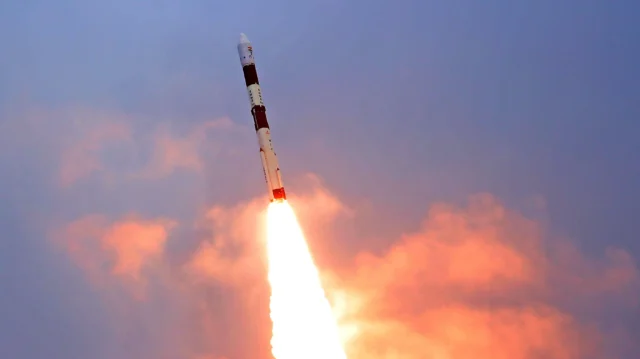EOS-08 Satellite Aboard SSLV-D3 Set to Revolutionize Earth Observation


The Indian Space Research Organisation (ISRO) is poised for a significant event as it prepares to deploy the Earth Observation Satellite (EOS-08) using the Small Satellite Launch Vehicle (SSLV)-D3. This mission marks the third development flight of the SSLV series, emphasizing ISRO’s commitment to advancing satellite technology.
Satellite Specifications and Mission Details
EOS-08 is engineered to operate in a Circular Low-Earth Orbit (LEO) at an elevation of 475 km, with an orbital inclination of 37.4 degrees. The satellite, weighing about 175.5 kg, is designed for a mission duration of one year and will generate approximately 420 W of power. It will be launched aboard the SSLV-D3/IBL-358 launch vehicle, which is integral to this mission’s strategy.
Payloads and Technological Enhancements
The satellite is equipped with a trio of sophisticated payloads: the Electro-Optical Infrared Payload (EOIR), the Global Navigation Satellite System-Reflectometry payload (GNSS-R), and the SiC UV Dosimeter. These instruments are pivotal for a range of applications from environmental monitoring to disaster management.
The EOIR payload excels in capturing images across the Mid-Wave IR (MIR) and Long-Wave IR (LWIR) bands, facilitating round-the-clock operational capability which is crucial for monitoring natural disasters, environmental changes, and industrial calamities.
The GNSS-R payload demonstrates its utility in remote sensing applications pertinent to ocean surface wind analysis, soil moisture levels, and flood monitoring, particularly beneficial for research in cryospheric regions like the Himalayas.
Lastly, the SiC UV Dosimeter plays a crucial role in the Gaganyaan Mission by monitoring UV irradiance and acting as a high-dose alarm sensor for gamma radiation, highlighting its significance in ensuring astronaut safety.
Advanced Systems and Mission Readiness
EOS-08 incorporates an advanced Integrated Avionics System known as the Communication, Baseband, Storage, and Positioning (CBSP) Package, which synergizes multiple satellite functions into a unified framework, enhancing operational efficiency. The mission also introduces new X-band data transmission capabilities through the use of pulse shaping and Frequency-Compensated Modulation (FCM), setting a new standard in data handling in space missions.
Moreover, the auto-launch pad initialization feature reflects ISRO’s innovative approach to satellite launch and mission management, ensuring that the EOS-08 mission not only meets but exceeds the technical expectations of modern satellite operations.
Source link



